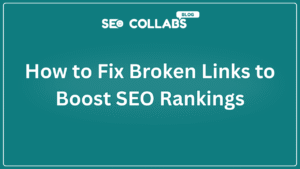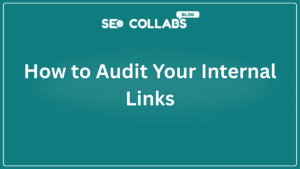In the intricate dance of SEO, links are your currency, but not all links are created equal. The difference between a nofollow and dofollow link might seem small, but it’s the key to building trust with search engines, avoiding penalties, and maximizing your site’s authority. Let’s unravel when and how to use each, with real-world examples, Google’s latest guidelines, and a peek at how SEO Collabs simplifies ethical link-building.
Table of Contents
What Are Nofollow and Dofollow Links?
- Dofollow Links: The default. They pass “link equity” (SEO value) to the linked site, signaling trust to search engines.
- Nofollow Links: Include the rel=”nofollow” attribute, telling search engines not to pass equity or associate your site with the linked page.
Google’s Golden Rule: Use nofollow for untrusted, paid, or user-generated content to avoid endorsing spam.
When to Use Nofollow Links
1. Sponsored Content & Affiliate Links
- Example: A blog post reviewing a product you’re paid to promote.
- Why: Google requires disclosure to prevent manipulative link schemes.
- Code: <a href=”https://example.com” rel=”sponsored”>Best Coffee Maker</a>
2. User-Generated Content (UGC)
- Example: Blog comments, forum posts, or social media links.
- Why: Users could spam your site with low-quality links.
- Code: <a href=”https://example.com” rel=”ugc”>Check this out</a>
3. Untrusted or Unvetted Sites
- Example: Linking to a site you haven’t personally reviewed.
- Why: Protect your site from associating with potential spam.
When to Use Dofollow Links
1. Editorial Endorsements
- Example: Citing a peer-reviewed study in your article.
- Why: Shows you trust the source, passing authority naturally.
2. Guest Posts on Trusted Sites
- Example: A guest blog on a high-DA industry site.
- Why: Strengthens your site’s relevance and authority.
3. Partner Collaborations
- Example: Linking to a client’s case study on your portfolio.
- Why: Ethical, mutual promotion with no paid exchange.
Google’s Guidelines: Updates You Can’t Ignore
- 2019 Change: Nofollow became a “hint” rather than a directive, but still treat it as a rule.
- New Attributes: Use rel=”sponsored” for paid links and rel=”ugc” for user-generated content.
- Penalty Risk: Failing to nofollow paid links can lead to manual actions or lost rankings.
Strategic Use Cases
- Case Study 1: A fashion blog uses nofollow for affiliate links but dofollow for a designer interview. Result? Higher rankings for non-sponsored content.
- Case Study 2: A tech forum auto-adds ugc to user links, preventing spam penalties while fostering community.
How SEO Collabs Takes the Guesswork Out of Linking
Building ethical backlinks is a minefield of rules—but SEO Collabs makes it effortless. Our platform:
- Automates Compliance: Auto-adds nofollow to sponsored collaborations and flags risky links.
- Vets Partners: Connect with trusted sites for dofollow guest posts and resource swaps.
- Tracks Performance: Monitor how your link strategy impacts DA, traffic, and rankings.
Example: A travel blogger uses SEO Collabs to secure 10 dofollow links from high-authority sites and 5 nofollow affiliate links—all while staying penalty-free.
Internal vs. External Links: The Bigger Picture
While this guide focuses on external links, understanding how they work with internal links is crucial. For a deep dive, explore our guide: Internal vs. External Links: What’s the Real Difference?.
Your Action Plan
- Audit Existing Links: Use Ahrefs/SEMrush to find non-compliant links.
- Add Attributes: Apply nofollow, sponsored, or ugc where needed.
- Collaborate Wisely: Use SEO Collabs to build dofollow links from vetted partners.
Conclusion
Nofollow and dofollow links aren’t just technical jargon—they’re your toolkit for ethical SEO growth. By following Google’s guidelines and leveraging tools like SEO Collabs, you’ll build a backlink profile that’s both powerful and penalty-proof.

Ready to Master Ethical Linking?
👉 Join SEO Collabs to automate compliance, find partners, and turn links into rankings.
Why SEO Collabs?
- No Penalties: Built-in safeguards for nofollow/dofollow compliance.
- Time Saved: Skip manual outreach with our partner network.
- Transparency: Track every link’s impact in real time.
Your site’s authority starts with the right links. Choose wisely, build strategically, and watch your SEO soar!




